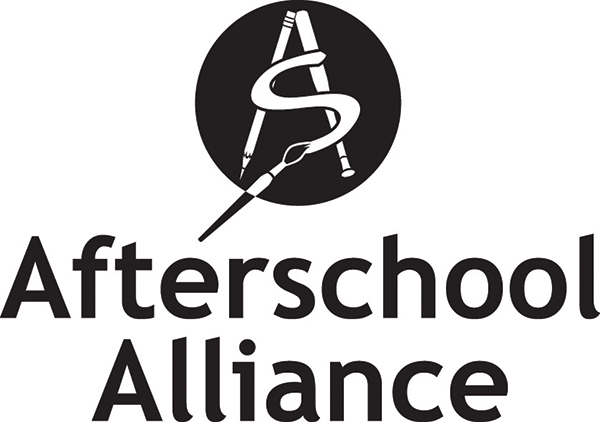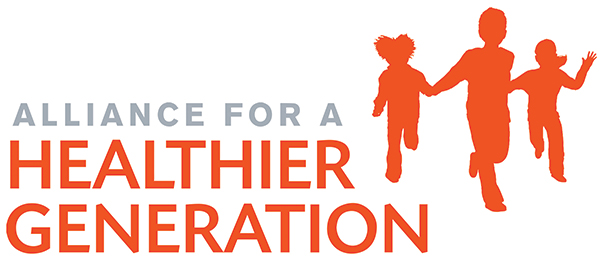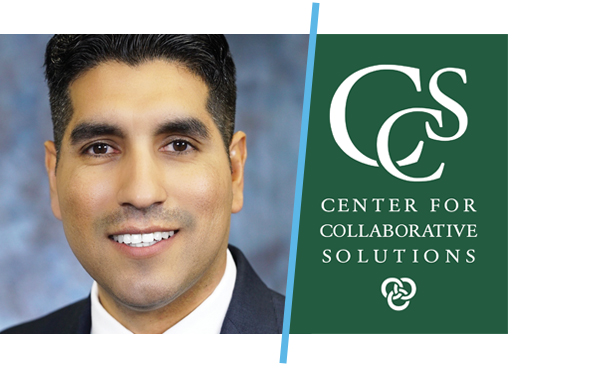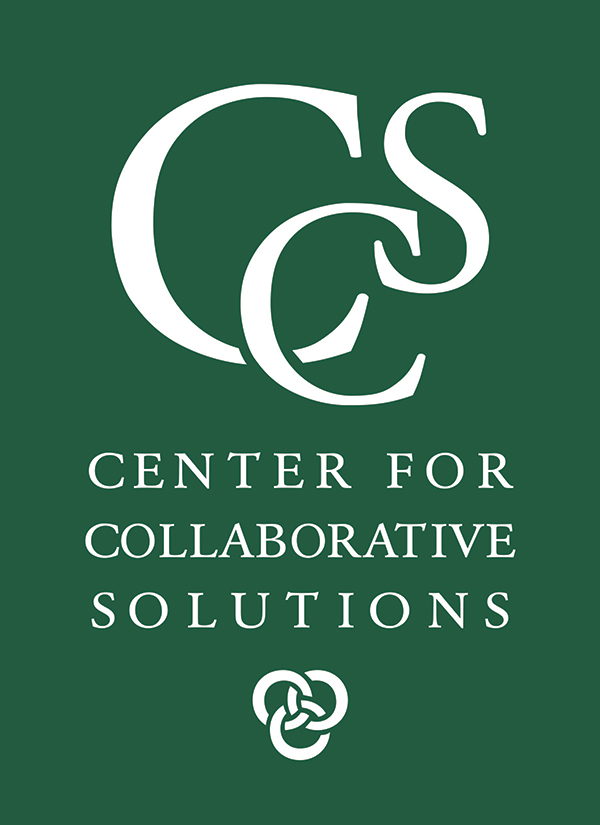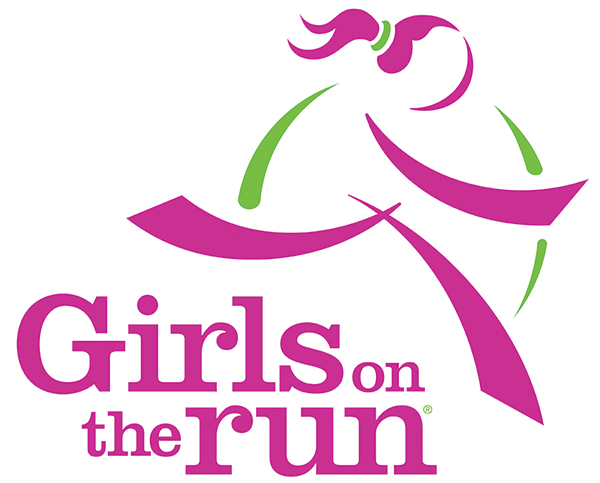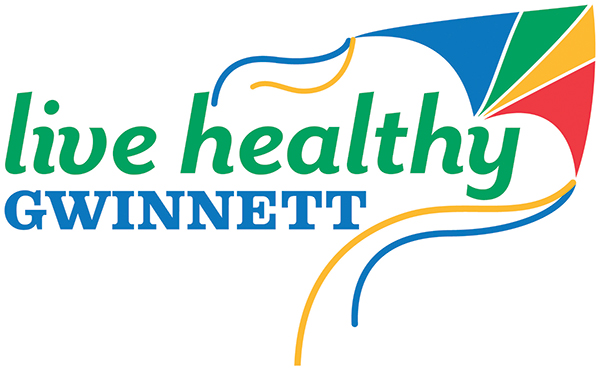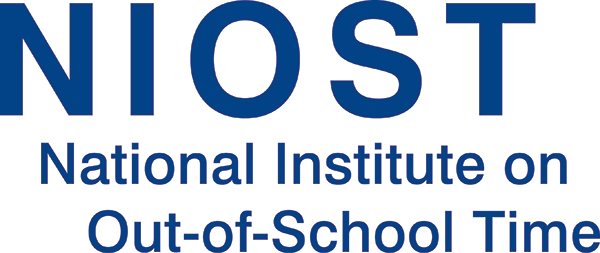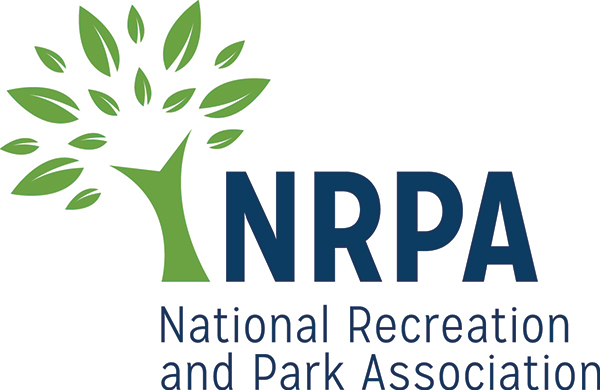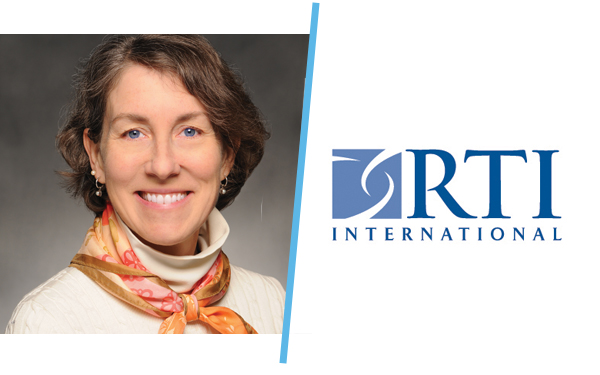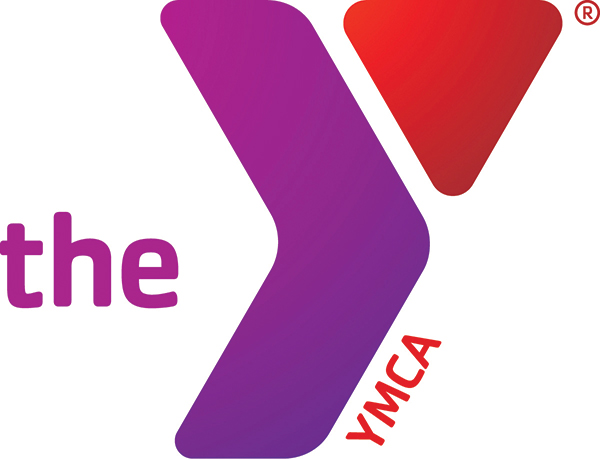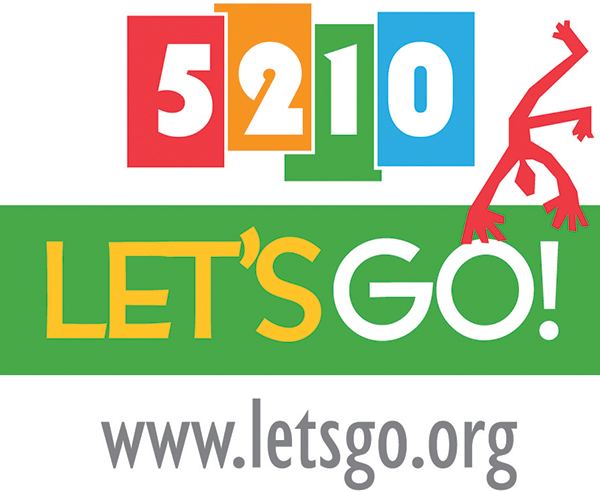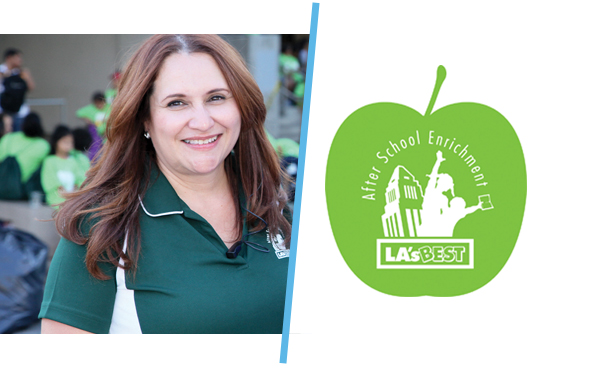Those honored represent individuals and organizations whose service, action and leadership align with and support NAA Healthy Eating and Physical Activity (HEPA) Standards and affect large numbers of youth, families or afterschool professionals, if not all.
NAA's Most Influential in Health and Wellness 2017 is proudly sponsored by The Walking Classroom, a nonprofit organization that helps youth get fresh air and exercise while reinforcing academic subjects, health literacy and character values.
Congratulations and thank you to those lauded as our 2017 Most Influential! Read on for insights from those selected.
Most Influential in Health and Wellness
Afterschool Alliance
Washington, D.C. | afterschoolalliance.org
Responses provided by Erik Peterson, Vice President, Policy, and Tiereny Lloyd, Director of Health and Wellness Initiatives
What is your greatest achievement related to Health and Wellness in afterschool?
Erik Peterson: "I am proud to be a part of the Afterschool Alliance and the afterschool field, and to have seen firsthand the progress the field has made toward advancing healthy eating and physical activity in afterschool and summer learning programs. I'm especially proud of the role the Afterschool Alliance and our staff and allies have played in support of the NAA HEPA Standards; advocacy for national expansion of nutritious afterschool meals through enactment of the Healthy Hunger-Free Kids Act of 2010 and ongoing work to implement the CACFP Afterschool Meal program; publication of the America After 3PM Kids on the Move report; and management of the Voices for Healthy Kids Out of School Time Consortium."
Tiereny Lloyd: "Being relatively new to the afterschool community, I would have say tackling the learning curve has been my most important achievement as it relates to Health and Wellness in OST. Within a little over a year, I've learned—and continue to learn—the overall OST landscape and how healthy eating and physical activity fits into it, and the key influencers and stakeholders, and I've gained the ability to articulate the importance of implementing healthy eating and physical activity practices in OST programs. It has truly been a privilege to strategize and connect with state advocates to increase access to healthy foods and physical activity in OST settings. My greatest achievement: I wake up each day proud to do what I do!"
What do you hope to achieve related to Health and Wellness in afterschool?
Erik Peterson: "I have seen up close and personal with my own sons that out-of-school time programs that incorporate vigorous and intentional physical activity can inspire young people to embrace healthy habits in other parts of their lives. My vision is for all afterschool programs to embrace and implement the NAA Healthy Eating and Physical Activity Standards, and for private, local, state and federal funding streams to be leveraged and easily accessed in support of NAA HEPA implementation and staff training."
Tiereny Lloyd: "My vision is for out-of-school time to be widely viewed as an integral setting in which to combat childhood obesity and help children grow up physically strong and emotionally healthy. Since overall participation in OST is steadily growing, OST disproportionally serves youth who have been identified as most at risk; as children spend a significant amount of time in OST, we are certainly in an advantageous position to be a part of the health and wellness solution. With a heightened awareness and acceptance of the importance and impact of OST as a whole, more resources and healthy opportunities for youth and providers would be available. Hopefully, one day we will no longer have to compete for funding or convince decision makers that youth participating in OST programs have a right to equitably access healthy opportunities."
Alliance for a Healthier Generation
Portland, Oregon, | New York, New York | healthiergeneration.org
Responses provided by Daniel Hatcher, Director, Community Partnerships
What is your greatest achievement related to Health and Wellness in afterschool?
"Regardless of your afterschool program's type or size, the Alliance for a Healthier Generation and our partners are committed to ensuring everyone has access to easy-to-use resources and relevant strategies*. Our online Healthy Out-of-School Time assessment is available to any afterschool program that wants to implement the National AfterSchool Association Healthy Eating and Physical Activity Standards. I am proud of how we've been able to shine a spotlight on the successes of local programs across the country through our healthy afterschool blog, online trainings and in-person workshops. For over a decade, we have been building bridges to help anyone find tools that meet their needs and interests."
*https://host.healthiergeneration.org/
What do you hope to achieve related to Health and Wellness in afterschool?
"Imagine an America where all 10.2 million children in afterschool are empowered to create healthy thriving communities! The Alliance for a Healthier Generation encourages all afterschool programs in the country to dedicate themselves to integrating health and wellness into whatever drives them. We dream of communities where afterschool professionals work in partnership with government, healthcare providers, school districts, business and caregivers to design experiences that ensure all children succeed. Our work in afterschool is committed to the vision that everyone has a seat at the table and when they get a seat, their voice is truly heard."
Bruno Marchesi, Chief Operating Officer
Center for Collaborative Solutions | Sacramento, California | ccscenter.org
What is your greatest achievement related to Health and Wellness in afterschool?
"My greatest achievement related to Health and Wellness in afterschool would certainly have to be that I have been blessed to have the opportunity and be part of creating change around health and wellness at the local, regional and statewide levels. Having started my afterschool career in the front lines doing direct service has given me an invaluable perspective that I carry with me to current conversations at the regional and statewide levels. I am blessed to continue to have the opportunity to stay connected at the local level, as I see my role being an interpreter of policy and translating this into practice, working directly with afterschool programs. A good example of this would be having the opportunity to be part of the creation of the Quality Standards for Expanded Learning Programs in California, which include one on healthy choices and behaviors, and being able to work directly with programs on the successful implementation of these quality standards through the Healthy Behaviors and My Brother's Keeper Initiatives."
What do you hope to achieve related to Health and Wellness in afterschool?
"I sincerely hope to be able to continue working with afterschool programs and communities in finding their voice around health and wellness to continue to break cycles for the students and families that we serve. Through this work, I hope that we can continue to create policy, systems, and environmental changes that truly transform communities into environments that promote healthy living and equal access for communities to thrive."
Center for Collaborative Solutions
Sacramento, California | ccscenter.org
Responses provided by Janet Walden, President and CEO
What is your greatest achievement related to Health and Wellness in afterschool?
"Although we at CCS can name many achievements related to Health and Wellness in afterschool since we began our work in this area in 2004, we believe our greatest achievement is how our Healthy Behaviors Initiative (HBI) changed the entire landscape of afterschool in California, bringing a strong and intentional focus to the issues of nutrition education, physical activity and food security throughout the system. This is quite significant, as California has over 4,000 state and federally funded afterschool program sites operating in low-income areas throughout the state. We succeeded in gaining awareness and buy-in statewide—at the state, regional and local levels—for the importance of health and wellness for students and their families. And with this we also designed and ensured implementation of policies and practices that brought this buy-in to life—producing significant improvements in afterschool health-related programming as well as health and wellness improvements for students.
"HBI has fundamentally changed afterschool programs by intentionally changing their policies, systems, program design and staff behaviors so children and youth can learn and practice healthy eating and physical activity, including changing their eating patterns, increasing the amount of time they engage in moderate to vigorous physical activity, strengthening their food security, and increasing their ability and commitment to making healthy behaviors a way of life.
"Our change model at CCS begins by promoting and supporting intentional changes in program practices. This then shifts the organizational conversation which changes the institutional culture, and that then leads to system change. All of these changes provide the impetus to policy change."
What do you hope to achieve related to Health and Wellness in afterschool?
"Our hopes for the future all revolve around achieving a broader reach and the deepening of afterschool's focus on health and wellness. This includes being able to establish more Afterschool Program Healthy Behaviors Learning Communities and Learning Centers throughout our vast state, particularly in high-population and other underserved areas. Also, now that we have achieved legislation that includes an afterschool Quality Standard relating to healthy behaviors, we want to be able to help more and more programs focus on this particular Standard and implement the CCS Healthy Behaviors Exemplary Practices. And we are certainly open to and interested in helping other states wherever needed.
"Throughout the life of our CCS health and wellness work, what we have been able to achieve has been dependent on receiving government and foundation funding. We have been very fortunate over the years to receive funds from the following major sources to make our work possible: California Department of Public Health, Public Health Institute, The California Endowment, the David and Lucile Packard Foundation, and Kaiser Permanente.
"We do have one additional hope, and that is to gain additional funding for the My Brother's Keeper (MBK) work we began with a grant from the Packard Foundation. This MBK effort is also part of the larger picture of health and wellness for our youth—a vitally important component! CCS is passionate about being able to contribute to helping boys and young men of color to succeed in school and in life through identification and implementation of best practices in afterschool programs."
Food Research and Action Center (FRAC)
Washington, D.C. | http://frac.org
Responses provided by Crystal FitzSimons, Director of School and Out-of-School Time Programs
What is your greatest achievement related to Health and Wellness in afterschool?
"The Afterschool Meal Program provides federal funding to afterschool programs in low-income areas where at least half of the students in the local school are eligible for free or reduced-price school meals. In 2000, FRAC worked with Congress to create the Afterschool Meal Program in six states. Over the years, FRAC has worked with our partners including the National Afterschool Association (NAA) to expand the program to additional states until it was made nationwide through the Healthy Hunger-Free Kids Act of 2010. We also have worked closely with NAA and our other national, state and local partners to promote the program and to overcome barriers to participation."
What do you hope to achieve related to Health and Wellness in afterschool?
"We believe that afterschool programs and healthy food fit together perfectly. Our vision is that afterschool and summer programs provide children the healthy and nutritious meals and snacks they need to keep learning, stay engaged and be active throughout the afternoon. We are working hard to ensure that eligible afterschool and summer programs are participating in the Afterschool and Summer Nutrition Programs."
Girls on the Run
Charlotte, North Carolina | girlsontherun.org
Responses provided by Heather Pressley, Vice President of Programming
What is your greatest achievement related to Health and Wellness in afterschool?
"Girls on the Run provides a safe and welcoming space where girls can thrive. Our intentional curriculum effectively integrates life skills learning with physical activity to provide girls with the skills and confidence to navigate their lives with purpose and joy. With a focus on quality program delivery, our formal volunteer training ensures that coaches are fostering positive, supportive relationships in a caring, inclusive climate. While our evaluations show that participants become more active and learn important life skills such as intentional decision-making, managing emotions and helping others, there is no greater achievement than hearing directly from a girl we serve about the impact that our program has had on her life. As Calla, age 8, shared, 'Because of Girls on the Run, I know I am amazing just the way I am.'"
What do you hope to achieve related to Health and Wellness in afterschool?
"Now, more than ever, we are committed to our vision of a world where every girl knows and activates her limitless potential and is free to boldly pursue her dreams. As such, we have dedicated significant resources to formally assess and address barriers to participation, to ensure our program is accessible to any girl who wants to participate. We are being purposeful about developing best practices, relationships and resources to support our network of councils as they engage new sites to host our program and expand into underserved communities. It is critically important that girls learn that they are the leaders of their lives with the power and potential to change the world, and we have a deep responsibility to ensure that all girls are given this valuable life-changing opportunity."
Gwinnett County | Live Healthy Gwinnett
Lawrenceville, Georgia | gwinnettcounty.org | livehealthygwinnett.co
Responses provided by Tina Fleming, Director of Community Services
What is your greatest achievement related to Health and Wellness in afterschool?
"Being a founding partner of Live Healthy Gwinnett. As the current Director of Community Services and former Director of Parks and Recreation, I believe community partners are needed to improve the health and well-being of the shared communities we serve. To leverage department funds and staffing resources and to address the needs of a community of almost 1 million residents, I knew it was important to connect with like-minded partners who share in the mission of improving health in afterschool programs. Live Healthy Gwinnett was launched in 2014 alongside Eastside Medical Center with the mission to encourage and engage residents to invest in personal wellness while focusing on four major wellness areas: Be Active, Eat Healthy, Get Checked and Be Positive. Under my leadership, Live Healthy Gwinnett has grown to become a network of partners implementing year-round programs, events and initiatives for youth, adults and older adults. Our partners from Children's Healthcare of Atlanta Strong4Life assisted in developing our Health and Wellness Standards, which include our Wellness Guidelines. We have always promoted healthy habits within our afterschool programs, but our partners helped us tell our story and become a platform for others to adopt best practices. Live Healthy Gwinnett's partnerships have enhanced the health and wellness of our afterschool programs through staff trainings, evidence-based nutrition education, utilization of undergraduate and graduate student interns and incorporating outside organizations to connect with participants such as UGA Extension-Gwinnett, Girl Scouts of Greater Atlanta, American Red Cross, Gwinnett County Public Library and Gwinnett United in Drug Education (GUIDE), Inc. I also believe partnerships should be established internally among staff groups. Through Live Healthy Gwinnett, employees from different department divisions and sections combined efforts, allowing an increase in afterschool health and wellness services to be available. For example, Live Healthy Gwinnett partnered with Gwinnett Parks Foundation to establish a Health and Wellness Scholarship fund, used to provide free swimming lessons to at-risk youth attending summer camps within Gwinnett County Parks and Recreation facilities. Aquatic, recreation, youth athletic, volunteer resources and staff of Live Healthy Gwinnett worked together to develop this program, which has impacted more than 675 participants to date. I am very fortunate to have dedicated staff that is determined to improve the health and well-being of our afterschool participants and families alongside our Live Healthy Gwinnett partners. Together, we all are changing the face of Gwinnett."
What do you hope to achieve related to Health and Wellness in afterschool?
"As the demand for afterschool continues to increase, I hope my department resources and Live Healthy Gwinnett will be invited to the table to discuss, decide and ultimately assist in the implementation of afterschool health and wellness standards. I will continue to guide Live Healthy Gwinnett in establishing new afterschool health and wellness partners with the expectation of targeting diverse interest groups that too have a stake in the health and wellbeing of the county's youth. I believe a single organization cannot effect change in afterschool health and wellness, but a network of invested users committed to transforming the face of today's youth will ultimately achieve greater impact for healthy lifestyles. It is an honor to be recognized alongside Live Healthy Gwinnett as one of NAA's Most Influential in Health and Wellness. I look forward to continue establishing innovative solutions to address health and wellness in afterschool."
National Institute on Out-of-School Time (NIOST)
Wellesley, Massachusetts | niost.org
Responses provided by Georgia Hall, Ph.D., Senior Research Scientist
What is your greatest achievement related to Health and Wellness in afterschool?
"We work across the whole arena of the out-of-school time field at NIOST, including in areas such as workforce and professional development, youth outcomes, program quality assessment, immigrant and refugee experiences, summer learning programs, et cetera. We had a special opportunity in 2009 with funding from the Robert Wood Johnson Foundation's Active Living and Healthy Eating Research divisions to examine physical activity and eating experiences in a national sample of out-of-school time programs. This work led to the founding of the Healthy Out-of-School Time (HOST) Coalition and the writing of the Healthy Eating and Physical Activity Standards (HEPA) with our partners the YMCA of the USA and Jean Wiecha at RTI. We were grateful to the National AfterSchool Association for adopting the standards in 2011 and taking on a national strategy for sharing, disseminating and promoting the standards. We are extremely proud of the path this work has traveled since 2009."
What do you hope to achieve related to Health and Wellness in afterschool?
"NIOST's mission is to ensure that all children, youth and families have access to high-quality programs, activities and opportunities. We believe that these experiences are essential to the healthy development of children and youth, who then can become effective and capable members of society. At NIOST we expect to continue to give great attention to children and youth's healthy physical activity and eating experiences through the work of the HOST Coalition. We also have been fortunate to have a long-term partnership with BOKS (Build Our Kids' Success, Reebok Foundation), which has grown our knowledge about the value of before-school physical activity programs for learning and health, and the benefits experienced by families when children are active. We hope through these and other partnerships to continue producing research evidence and best-practice knowledge to continuously inform the field, youth-serving organizations and families about ways to best support the healthy development of our children and youth."
National Recreation and Park Association (NRPA)
Ashburn, Virginia | nrpa.org
Responses provided by Kellie May, Director of Health and Wellness
What is your greatest achievement related to Health and Wellness in afterschool?
"Park and recreation agencies are leading the way to healthier communities across the country. Since 2014, more than 1,250 local park and recreation sites have implemented the Healthy Eating Physical Activity standards in their out-of-school time programs, impacting over 228,000 children with increased access to nutritious foods and increased opportunities for physical activity. In just three short years, agencies have successfully changed their menus to offer healthier foods by ensuring that there is a fruit and vegetable at every meal (85 percent demonstrating) and water is available at all times to program participants (95 percent demonstrating). Park and recreation sites have evaluated and modified their program and activity schedules to make sure that kids are meeting the daily requirements for physical activity (97 percent demonstrating) and spending time outdoors (97 pecent demonstrating). Communities of all shapes and sizes are experiencing the benefits of local parks and recreation and their commitment to health."
What do you hope to achieve related to Health and Wellness in afterschool?
"NRPA wants every child to have access to an afterschool program at their local park and recreation agency where they can safely play outside, eat nutritious foods and develop lifelong healthy habits. Through NRPA's Commit to Health initiative, NRPA is helping 2,000 park and recreation sites accomplish these goals by 2019."
Jean Wiecha, Ph.D., Senior Scientist, Food, Nutrition and Obesity Policy Research Program
RTI International | Research Triangle Park, North Carolina |rti.org
What is your greatest achievement related to Health and Wellness in afterschool?
"Crafting the NAA HEPA standards with the HOST Coalition, which a small group of us convened in 2009, was an incredible example of collaborative leadership and research translation. We produced a document that everyone could get behind. Watching the diffusion of the standards throughout the OST field and participating in that process has been amazing. Our collaborative process has resulted in millions of children attending OST programs that are using the HEPA standards!"
What do you hope to achieve related to Health and Wellness in afterschool?
"We're getting closer and closer to it: I'd like to be confident that eating delicious healthy food and participating in lots of fun physical activity is built into every child's daily experience in afterschool. We'll be done when that's the new normal."
YMCA
ymca.net
Responses provided by Lauren Marciszyn, Manager, Capacity Building for Evidence-Based Programs, Membership & Programs, YMCA of the USA |Robert Hill, Director of Youth Wellness, YMCA of South Florida |Sheree Vodicka, Executive Director, North Carolina Alliance of YMCAs | Susan Fortier, Senior Program Director, Y Day Camp Director, Meeting Waters YMCA
What is your greatest achievement related to Health and Wellness in afterschool?
Lauren Marciszyn: "Garnering the support of YMCA staff and community partners to actively transform the afterschool environment and beyond through healthy eating and physical activity practices and policies. Together, 2,700 Ys across the country have committed to implementing the HEPA Standards, inspiring youth, their families and their communities to adopt healthier habits so they can achieve their fullest potential."
Robert Hill: "My greatest achievement related to Health and Wellness in afterschool is overseeing a training program on evidence-based, physical activity that allows most afterschool providers in South Florida—not just those run by the YMCA—to utilize trainings to help children get healthier. It has been so rewarding to establish this program for all afterschool providers and to create sustainable change. Through successes, we have also seen implementation of nutrition education strategies and every year we improve offerings in all of our interactions."
Sheree Vodicka: "Getting the HOST recognition bill passed was significant for us, because we are contributing significantly to the building of a culture of health in our state."
Susan Fortier: "Many of the children and families we serve in our afterschool and summer camp programs are what we'd consider 'food insecure.' So, our commitment to the national HEPA Standards has extended to the families of the young people in our programs. For many years now, our monthly Family Connection events at both our afterschool programs and camps have focused on providing experiences in healthy eating and routine physical activity with an emphasis on both foods and activities that can be easily replicated at home—within all families' financial means or readily available at area food pantries, and using 'equipment' that most families have around the house."
What do you hope to achieve related to Health and Wellness in afterschool?
Lauren Marciszyn: "Youth in our afterschool programs struggle with the health inequities found in every community. We know we can leverage this time to help all children gain access to and learn about healthy choices and habits. We hope the Y's Healthy Eating and Physical Activity standards lay the foundation of a healthier future for all."
Robert Hill: "When it comes to Health and Wellness in afterschool, I hope to have a lasting impact that will change policies and procedures to allow children to begin healthier lifestyles as soon as possible. In my organization, I will do this by further developing our model for health and wellness in youth programming: YFit. By continuing to build on the fundamental components of enjoying physical activity at a young age and role-modeling the importance of a healthy lifestyle, we are given the gift of being able to improve the health of whole families and increase years of quality life for children. This will allow myself and my peers to lead the work and always strive to be a signature change agent against childhood obesity and chronic disease: THE organization that shows others how it should be done and creates larger frameworks to turn these public health crises around."
Sheree Vodicka: "I hope that we can fully institute the HOST Recognition program and get significant uptake. Aligning all child care, afterschool and school experiences for children such that they are all hearing and seeing and being positively impacted by every aspect of the communities in which they live, learn and play would be really meaningful and create a culture of health we are seeking."
Susan Fortier: "Family, school and community norms around healthy eating and physical activity, if not consistently in support of positive behaviors, are just too hard for a child to overcome. So, we are committed to an ongoing effort to improve policies, systems and environments so that the healthy choice is consistently the easy choice for young people to make as they move throughout their days."
Honorable Mentions
5210 Let's Go!
Portland, Maine | mmc.org/pediatrics-lets-go
Responses provided by Emily Walters, Director
What is your greatest achievement related to Health and Wellness in afterschool?
"Let's Go! collaborates with a wide range of programs and reaches a diverse population in the out-of-school setting to help reinforce healthy eating and active living messages and strategies learned during the school day. In 2016, we worked with 118 registered sites, 97 percent of which completed our annual survey, a win in itself. Let's Go! out-of-school programs are committed to healthy snacks, limited screen time, increased activity and zero sugary drinks! We celebrate all of these accomplishments and recognize sites as gold, silver or bronze based on their level of implementation. We are proud to report that out-of-school programs have the highest rate of priority strategy implementation among all of our settings. In 2016, 91 percent of out-of-school sites achieved recognition: 36 gold level sites, 18 silver level sites and 53 bronze level sites.* We believe this is partly due to the fact that many sites are following the National AfterSchool Association Healthy Eating and Physical Activity Standards. Let's Go! published a new out-of-school toolkit in 2016 and aligned its 10 strategies to the HEPA standards, making it easier for partners to see how the two programs connect and support one another."
*Please visit www.letsgo.org/programs/after-school/distinction/ for recognition criteria.
What do you hope to achieve related to Health and Wellness in afterschool?
"We hope to increase the number of sites we work with by 5 percent in 2017 and increase the percent of recognized sites by 2 percent, all while helping sites move up in the recognition program. What this means is that we're committed to expanding our reach and creating sustainable environmental and policy change to make the healthy choice the easy choice and increase healthy habits, especially behaviors related to our 5-2-1-0 message: 5 or more fruits and veggies, 2 hours or less of screen time, 1 hour or more of physical activity and 0 sugary drinks, more water."
Arizona Empower Program
Phoenix, Arizona | azdhs.gov/empower-program/
Responses provided by Bonnie Williams, Early Care and Education Manager
What is your greatest achievement related to Health and Wellness in afterschool?
"Our greatest achievement is implementing the Empower standards statewide, including programs that serve before school and afterschool only, or as part of the birth-through-age-12 continuum. While the standards are voluntary, over 99 percent of licensed facilities choose to implement them, getting a fee reduction of 50 percent. This is a huge systems win for Arizona! The Empower program has grown in popularity and is often cited nationally."
What do you hope to achieve related to Health and Wellness in afterschool?
"We hope all children, but especially elementary-age children who are gaining more autonomy, learn to moderate their food intake and physical activity, developing healthy habits for life. We hope the adults in their lives, whether family, caregivers, teachers or community members, will encourage them and provide opportunities to be healthy."
Edith Ballesteros, Director of BEST Fit
LA's BEST | Los Angeles, California | lasbest.org
What is your greatest achievement related to Health and Wellness in afterschool?
"Creating BEST Fit—the dedicated health and wellness program at LA's BEST—is my greatest achievement related to Health and Wellness in afterschool. Further, by integrating BEST Fit activities into daily core programming at LA's BEST, all 25,000 children served by the organization each day have better chances to develop healthy habits at a young age and lead healthy lifestyles. I also attribute success to working with supportive partners in health and wellness, and maximizing our resources to influence our children, families, schools and communities to adopt and maintain healthy daily routines."
What do you hope to achieve related to Health and Wellness in afterschool?
"I hope to achieve even greater impact in health and wellness beyond the students of LA's BEST. I really want to see our efforts in health and wellness reach all our stakeholders, including our staff, families, schools and communities by advocating for and integrating elements of physical activity, nutrition, gardening and even social awareness into their lifestyles. We need healthy communities as much as we need healthy individuals."
Hunger Solutions NY
Albany, New York | hungersolutionsny.org
Responses provided by Misha Marvel, Child Nutrition Programs Specialist
What is your greatest achievement related to Health and Wellness in afterschool?
"We are honored to serve as the statewide lead partner with NYS Network for Youth Success and Early Care and Learning Council on a new project, in collaboration with NYS Department of Health staff, to bring more meals and snacks into afterschool enrichment and early care settings through the Child and Adult Care Food Program (CACFP). This new initiative and funding in the state budget stemmed from a NYS Council on Food Policy recommendation to maximize participation in our federal nutrition programs, including CACFP.
"Through this partnership, we are building a foundation of targeted outreach, information and education for care providers and school leaders, and raising awareness that serving healthy meals through CACFP can be a natural part of successful afterschool enrichment programming and high-quality child care. We are dedicated to ensuring that the places where kids and teens learn, develop and are cared for can provide healthy food to the children who need it most. We believe this strategy is increasing awareness about the value of the program and will translate into increased participation in the year ahead. Please visit AfterschoolMealsNY.org for materials.
"Food insecure children are at a physical, academic and social disadvantage. During regular school hours, free and reduced-price school meals help to ensure they have access to nutritious food. But by the end of the school day, lunch is a distant memory. Children often feel run down, their attention span shortens, their ability to learn diminishes, and they may have difficulty fully participating in extended school day learning or afterschool activities. Afterschool meals and snacks help to ensure children are energized and ready to learn, well after the traditional school day has ended."
What do you hope to achieve related to Health and Wellness in afterschool?
"Children who experience hunger lack a fundamental building block to health and academic success. We at Hunger Solutions New York are committed to helping every child succeed by providing tools and resources to maximize the benefits of federally funded nutrition assistance programs in every community in New York state. Through this work, we aspire to greatly improve public health and the lives of our kids and teens.
"My hope is that kids and teens who are well-nourished, in part, thanks to afterschool meals can stop worrying about what or when they are going to eat and focus on exploring their gifts and realizing their full potential.
"In New York state, 21 percent of all households with children suffer from food hardship, and more than 1.6 million of New York state's 2.7 million students (public K-12) qualify to eat school meals for free or at a reduced price, with many living in households where families are most likely to struggle to provide nutritious meals at home. We believe that the crippling reality of hunger in our state is unacceptable, and that it is reversible."
Maryland Out of School Time Network (MOST)
Baltimore, Maryland | http://mdoutofschooltime.org
Responses provided by Ellie Mitchell, Executive Director
What is your greatest achievement related to Health and Wellness in afterschool?
"In addition to being recognized as NAA's Most Influential in Health & Wellness in 2017: Since 2013, four Healthy Behaviors VISTA's* have successfully helped to fulfill the Maryland Out of School Time, or MOST, Network's partnership agreements with the Alliance for a Healthier Generation and the Maryland Food Bank introducing the Healthy Out of School Time, HOST, Framework to 30 MFB afterschool meal sites—10 each year, providing technical assistance and coordinating nutrition training provided by the University of Maryland Extension/Food Supplement Nutrition Education, also known as FSNE."
*AmeriCorps Volunteers In Service To America
What do you hope to achieve related to Health and Wellness in afterschool?
"The 2016 – 2017 calendar marks the beginning of efforts to expand statewide afterschool participation in the HOST/HEPA framework with our partners and through the Maryland Partnership to End Childhood Hunger's Maryland Wellness Workgroup. To better advance that work with supportive public policy, the Healthy Out of School Time Heroes Recognition Program has been introduced in the 2017 Maryland General Assembly as House Bill 454 sponsored by Delegate Brooke Lierman and Senate Bill 806 sponsored by Senator Nancy King. The first hearing of HB 454 was held February 14, 2017, in the Ways & Means Committee with Delegate Lierman, MOST Network Executive Director Ellie Mitchell, and a panel of MOST Network partners. The first hearing of SB 806 is currently scheduled to be heard on March 8, 2017, in the Education, Health & Environmental Affairs Committee with Senator King, MOST Network, and a panel of partners."
An extended version of the magazine article is available here.
Edited by Amy L Charles.


